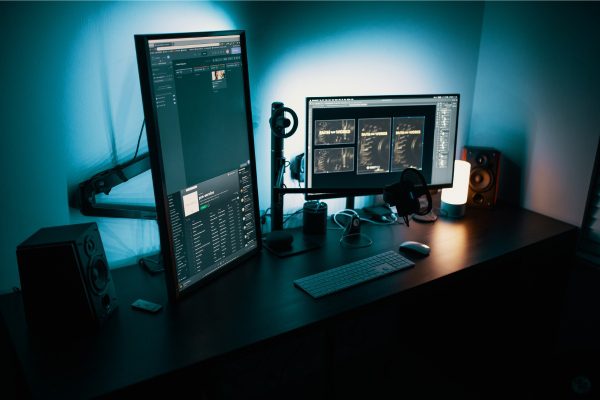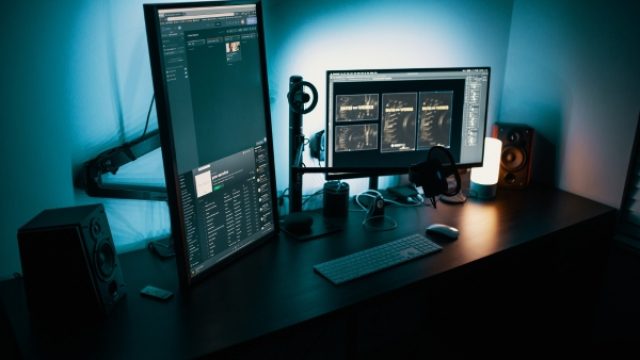Problem Identification
Configuring a dual monitor setup usually presents multiple advantages for users, from increased workspace to better multitasking. However, an issue often arises after the completion of the dual monitor set-up – that is the problem of the mouse direction. On close observation, it becomes evident that moving the mouse from the primary to the secondary monitor doesn’t happen in the anticipated left to right direction. Instead, the movement pattern appears to be the opposite of the user’s physical arrangement of monitors.
Observation of Mouse Direction Issue After Dual Monitor Set-Up

When the dual monitor setup is complete, users frequently notice an unusual behavior concerning the mouse direction. They discover that they are unable to maneuver their mouse from the primary display to the secondary one, not by directing it to the right as they naturally would, but rather, in the opposite direction. This strikes the user as odd since it is counter-intuitive to their layout of the monitors.
The Mouse Movement Not Aligning with the Physical Arrangement of Monitors
What makes this issue more perplexing is the fact that, despite seeming to be ‘stuck’ on the primary monitor, the mouse pointer effectively moves to the secondary monitor, but only when the mouse is directed to the left of the primary screen. This makes it appear on the right of the secondary screen, which, understandably, can be confusing for users. At this point, the user usually seeks a solution to make the mouse movement reflect the physical arrangement of the monitors i.e., moving the mouse to the right on the primary screen should make it appear on the left of the secondary screen, and vice versa.
Possible Solutions
There are a couple of possible solutions for users experiencing difficulties with the mouse direction in a dual monitor setup. These solutions range from physically swapping the positions of the monitors to adjusting the display settings on their computer.
Physical Swapping of Monitors
The most straightforward solution to this issue might be to physically swap the monitors around so that the secondary monitor is positioned to the left of the primary monitor. This solution directly addresses the problem by making the physical arrangement of the monitors match the mouse movement. However, physically rearranging the monitors might not always be feasible or practical, especially in setups where the monitors are of different sizes, or where one is mounted on a wall or stand.
Adjustment of Monitor Positions via Display Settings
If physically swapping the monitors isn’t an option, the configuration can be adjusted in the computer’s display settings. Users can right-click on the desktop to select the Personalize option, go to Display Settings, and locate the illustrations of both monitors in the Monitors tab. Here, the mouse can be used to drag each monitor to its correct position (left or right, depending on the user’s preference), then click OK to save the new settings.
In some operating systems, users can navigate to Graphics Properties through the context menu that appears after right-clicking on the desktop. After selecting Advanced Mode and going to the Monitor/TV settings, users can customize the display position of each monitor.
Alternatively, users can open the Settings application, navigate to Devices, and then to Displays. Here, the mouse can be used to position the secondary monitor wherever the user prefers. If the monitors are of different sizes, the smallest can be aligned with the middle, top or bottom edge of the bigger display. Click on “Keep Change” to save the new arrangement, or use “Revert Settings” to undo the changes if something goes wrong. The dock and the top bar can be moved to the left screen by making screen 2 the primary display.
Steps to Adjust Monitor Positions in Display Settings

The preferred method for solving the direction issue, especially where physically swapping monitors isn’t convenient, is to adjust the monitor positions via the Display Settings of your computer system. This procedure involves several steps which are easy to follow. They merely require some clicks and dragging operations.
Right-Clicking Desktop and Selecting Personalize
The first step in adjusting the monitor’s positions is initiating the Personalize window. Users can do this by right-clicking anywhere on their primary desktop. A dropdown menu will appear, from which users select the option labelled ‘Personalize’. This opens a new window that contains several customization options for the user’s system.
Navigating to the Display Settings and Monitors Tab
Within the Personalize window, users will find a list of customization settings. The user should then navigate to the ‘Display Settings’ option and select it. In the subsequent Display Settings window, there’s a tab labelled ‘Monitors’. This tab contains a visual representation of the current monitor arrangement. The user’s primary and secondary monitors are depicted as numbered rectangles.
Dragging Monitor Pictures to Correct Positions and Saving Settings
Once the Monitors tab is accessed, users can easily manipulate the arrangement of the displays. This is done by clicking and dragging the numbered rectangles that represent the monitors. Users can drag either monitor to their correct position – whether from right-to-left or vice versa. After dragging the monitors to the desired positions, the new settings can be saved by clicking ‘OK’. Once these steps are completed, the mouse should now be able to move between the two monitors in a manner that is more intuitive and in sync with the physical arrangement of the monitors.
User Experiences and Additional Concerns
While the solutions detailed above are effective in rectifying the direction issue that often arises after dual monitor installation, certain caveats and additional concerns can come up in the course of the users’ experience. Changes caused by new hardware installation or using a monitor as a TV, or the user’s preference to retain a particular monitor as the primary one often affect the smooth functioning of these solutions.
Related article: Tracking a MacBook After Factory Reset
Changes of Settings After New Hardware Installation, like a Printer
A new hardware installation after the display settings have been adjusted might unexpectedly alter the settings. This usually occurs when a device like a printer is installed and causes the operating system to re-evaluate the existing settings, leading to a possible reset. In such scenarios, the user might need to go back to Display Settings and readjust the monitor arrangement to restore the desired mouse movement direction.
Issue of Monitor being Used as TV
Another concern that could affect the solution involves situations where one of the monitors doubles as a TV. When the dual-function monitor switches from being a computer display to a TV, some systems might automatically switch the primary monitor setting to the other display. This means the alignment of the mouse direction can be disturbed on reverting to dual monitor mode. Similar to the problem with new hardware installation, users may need to readjust their settings to fix the mouse direction.
Maintaining monitor on Left as Primary While Having Smooth Mouse Movement Across Monitors
Finally, some users may prefer to retain the monitor on the left as the primary one for various reasons. Yet, they would like to have the mouse move smoothly from left to right and vice versa. In such circumstances, adjusting the monitor positions in the Display Setting does not involve swapping their primary and secondary roles. Instead, the depiction of the monitors will be moved to mirror the actual physical arrangement, ensuring the mouse movement matches it.


